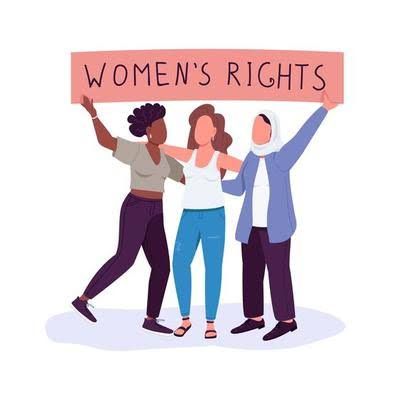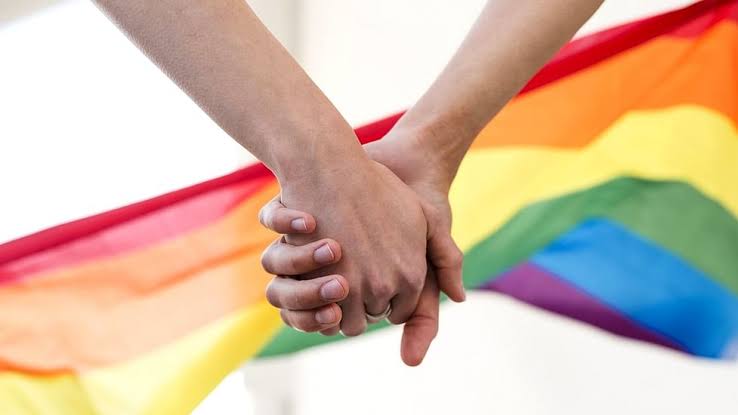SYNOPSIS
1.
Introduction
2.
Timeline of evolution of Women’s Rights
- Seneca Falls Convention, 1848
- Women’s Day – National & International (1909 – 1917)
- Female Genital Mutilation (FGM) confrontation in Egypt, 1920
- UN Charter, 1945
- UNCSW, 1946
- 1st Women Conference in Mexico, 1970
- International Conference on Population and Development, 1994
- UNSC Resolution 1325, 2000
- Pink Gang in India, 2006
- Educational Rights in Pakistan, 2013
- Cyber Activism for Women’s Rights, 21st Century
3.
International and National sheathing of Women’s Rights
- International Legislation
- Indian (National) Legislation
4.
Hint of Women Rights in Indian Landmark Case Laws
5.
Conclusion
- INTRODUCTION:
“Human rights are women’s rights, and women’s rights are human rights”
- Hillary Clinton
Women’s rights are the rights that facilitate the gender equality in economic, social, cultural, civil and political rights. In 2001 the concept of vulnerable groups were initiated in the case to cite the minority of Roma. Where the Vulnerable Groups included the women, children, and all the minority people who are discriminated based on their race, religion, caste, nationality, etc.
- TIMELINE OF EVOLUTION OF WOMEN’S RIGHTS:
- Seneca Falls Convention, 1848: The 1st Women’s Right Convention held in Newyork, headed by Elizabeth Cady Staton along with Lucretia Mott, and three hundred attendees in both genders signed the Declaration granting women, the ‘Right to Vote’.
- Women’s Day – National & International (1909 – 1917):
- 1909: Socialist Party of America – 1st National Women’s Day was proposed.
- 1910: Socialist International meeting, Copenhagen the International Women’s Day was initiated.
- 1911: 1st International Women’s Day was proposed by the Austria, Denmark, Germany and Switzerland. Its main focus of establishment was on Work/ job, and vocational training – labour rights.
- 1913 to 1914: International Women’s Day was based on resistance to war and voicing out solidarity with others.
- 1917: Russian Women’s Day or International Women’s Day in Russia, based on their movement for political and economic statuses.
- Female Genital Mutilation (FGM) confrontation in Egypt, 1920: Voices made against for asserting that it is harmful surgical process to health in the Genital organs of women.
- UN Charter, 1945: The first Charter after World War II, brought in for maintaining peace and protecting the human rights, during war or prohibiting war.
- UNCSW, 1946: The Economic and Social Council, one of the organ of UN, has its functional commission, i.e., the UN Commission on Status of Women, for facilitating the accreditation of women and acting as proponent for gender equality.
- 1st Women Conference in Mexico, 1970: 1st time ever for the discussion of Rights for the women.
- International Conference on Population and Development, 1994: ICPD provided various programmes or actions that tender towards the health and well-being of women irrespective of gender inequality.
- UNSC Resolution 1325, 2000: 1st resolution for initiating women participation in the strife prevention, to recognise and hinder the bombards or related activities, i.e., involvement of women in legal and political framework of United Nations.
- Pink Gang in India, 2006: Gulabi Gang of Uttar Pradesh – Banda district, are impregnable gang of women who are as of today are 10,000 women dressed in pink with bamboo ornaments, eventhough are penurious, they obviate the injustice against women like domestic violence, and any violence against women. This Gulabi or Pink Gang motivated various similar manoeuvres nationally.
- Educational Rights in Pakistan, 2013: Malala Yousafzai, advocates for education without any discrimination based on gender, who also got shot and wounded from head to neck for such activism in Pakistan. She made her public appearance in UN for the 1st time during her sixteenth birthday.
- Cyber Activism for Women’s Rights, 21st Century: This is where the internet and social media has upgraded. The national way of communication other than television, radio broadcasts or newspapers, this digital era paved way for the women movements drastically across the nation and globe. This also made way for the connection and expand strong bond of the women community against the gender inequalities and challenges faced accordingly.
- INTERNATIONAL AND NATIONAL SHEATHING OF WOMEN’S RIGHT
- INTERNATIONAL LEGISLATIONS:
There are various International legislations (i.e., Charters, Conventions, UN Bodies, and UN organisations) like:
The International Labour Organisation, 1919 which provides the Right to equality in work and payment without any discrimination as to gender, caste, race, religion, etc.
UN Charter, 1945 is the fundamental charter that aids along with the Universal Declaration of Human Rights (UDHR), 1948, UNCSW, 1946, Vienna Declaration and Programme of Action, 1993, ICPD, 1994, UNSC Resolution 1325, 2000 etc., concentrating on rights to be based on gender equality and making sure those rights are protected and attained by the Women through exclusive execution committees and bodies, like professional, health, defence areas, etc.
Beijing Declaration and Platform for Action (4th World Conference), 1995 is the important conference focusing on 12 key areas like – (i) uplifting them from poverty, (ii) providing educational and vocational training, (iii) improvising women health related aspects, (iv) protecting them against the violence, (v) involving and protecting them in armed conflicts with their consent, (vi) providing women the opportunities to develop themselves as well as the nation’s economy, (vii) giving them the opportunity in civil and political areas by providing their power and decision-making, (viii) establishing specialised institutions that provides knowledge and professional skills without gender discrimination based on laws and policies; (ix) the promotion of Women’s Right in the Human Rights, (x) involving the media to expose the violence or any breaches of the rights related to women rights, (xi) involving men in environment related matters as they are most involved in the flourishing the environment by using their elements like water, soil, plants cultivation, etc., (xii) girl child related protection from sexual violence or abuses, education facilitation, health related protection like prohibition of FGM, etc.
UN Human Rights Council, 2006 & its ‘Universal Periodic Review (UPR)’ concerns the ‘women, peace, and security (WPS)’ agenda is where the gender equality and Analysis of the Conflict in UPR are the main streams in this part.
UN Sustainable Development Goals, 2012 (SDG 5) asserting ‘Achieve gender equality and empower all women and girls’ giving and promoting the women rights.
- INDIAN (NATIONAL) LEGISLATIONS – Rights for women conferred as to:
- Equal Pay: Article 39(d), Article 41 of Indian Constitution, 1950; and the Equal Remuneration Act, 1976 (Sec.4) provides for the right to equal pay and maternity benefits availment to the pregnancy women, so as to make the up-liftment of women equal to men in the earning capacity.
- Live in dignity and decency: IPC Sec. 354 A – Sexual harassment; IPC Sec. 354B – Assault with the intent to disrobe her; IPC Sec. 354C – Voyeurism; IPC Sec. 354D – Stalking; Article 21 of Indian Constitution, 1950. All these provisions facilitate with this right to live in dignity and decency.
- Prohibition of workplace harassment: IPC Sec. 498A – protection from domestic abuse, further a landmark case law also facilitated to establishment of awareness programmes and legislation to stop sexual harassment or abuse in workplace.
- Prohibition of dowry harassment: Dowry Prohibition Act, 1961 is where the dowry is prohibited in either giving or receiving, which includes tangible items between the parents or parties related to or in connection with marriage.
- Keep identity anonymous: In IPC Sec. 376, 376A, 376B, 376C, 376D – the disclose the identity of women in Sexual Assault Offences; Sec. 228A – prohibition of names of women assaulted sexually; and POCSO Act, 2012 (Sec. 23) – media prohibited to disclose child victim identification, are the provisions explicitly providing the said Right.
- Legal Aid: In Article 14, 22(1), 39A of Indian Constitution, 1950; Legal service authorities act, 1987 clearly provide the right to legal aid.
- Not to be arrested at night: CrPC, 1973 (Sec. 46) – subsection added in 2005 amendment to prohibit arrest after sunset or before sunrise except in special circumstances.
- Register virtual complaints: the 2012’s Zero FIR case after the ‘Nirbhaya case’ which made a victim friendly mode of making complaints through online mode.
- Privacy while recording the statement: CrPC, 1973 (Sec. 164) asserts the raped women statement when recorded by the District Magistrate in trial, at that time there must be no witnesses, and there must be only female officer and comfortable location.
- Women’s Rights Bill: Verma Committee of 2012 initiated the recommendation to amend the Criminal Law for speedy trial and stringent punishment to the perpetrators committing sexual assault against women.
- HINT OF WOMEN’S RIGHTS IN INDIA LANDMARK CASE LAWS
- Vishaka vs. State of Rajasthan: Right against the sexual harassment in workplace.
- Mary Roy Etc.vs. State of Kerala & Ors.: The Right to Seek equal share in father’s property for the Syrian Christian Women.
- Hussainara Khatoon v. Home Secretary, State of Bihar: Right to speedy commencement of trial.
- Lata Singh vs. State of Uttar Pradesh & Anr.: Right to Marriage and live with anyone of her choice.
- Roxann Sharma vs. Arun Sharma : Right of custody of child remain with mother, when there is a tussel between the parents of child below under 5 years of age.
- Tamil Nadu vs. Suhas Katti: The 1st cyber-security case for protection of women against sexual harassment and accusations through online perpetrators.
- Laxmi vs. Union of India & Ors.: Stringent provisions laid down by the Supreme Court for sale of illegal acid and prevention of acid attacks on women.
- Centre for Enquiry into Health and Allied Themes (CEHAT) vs. Union of India: Prohibition of identification of foetus as pre-natal diagnostic techniques.
- Vidhya Saxena & Anr. vs. East Delhi Municipal Corporation & Ors. : Mother name can also be used as Surname, as the Women’s Right being enhanced in this landmark case.
- Vineet Sharma vs. Rakesh Sharma: Property right equally distributed without any gender discrimination..
- Secretary, Ministry of Defense vs. Babita Puniya and Ors.: In Army, facilitation of Gender equality.
- Kajal Mukesh & Ors. vs. State of Maharashtra : Profession/Work/Job to be choosen by the women herself, as her Right to choose.
- Hina Haneefa vs. Union of India : Transgender Right provided.
- CONCLUSION
Women’s Rights are the rights that empower not only that individual person, but also the society as a whole. The women and other minority people must be enhanced from the vulnerable groups and provided equal rights as others with regard to economic, social, cultural, civil and political rights. Thus, If women are empowered the whole nation is empowered.
Author:-Vinodini Priya. S,BA-LLB (Final Year) Student of Government Law College, Vellore. Tamil Nadu.




